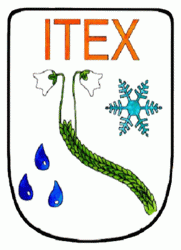Geography, geology and climate
The northern Apennines form a 250 km long mountain barrier running in a NW-SE direction and separating the Po plain in the North from the Italian peninsula in the South. This mountain system spans about 12,000 km2 and extends approximately between 43°40’ and 44°40’ N and between 9° and 11° E. The northern Apennines are subdivided into three districts, geographically separated and lithologically distinct: the Ligurian-Emilian Apennines to the north-west, the Tuscan-Emilian Apennines to the south-east and the Apuan Alps southwards. The Tuscan-Emilian district represents the core of the mountain system and includes the only four summits exceeding 2000 m a.s.l. in the northern Apennines: Mt. Cimone (2165 m), that is the highest peak in the area, Mt. Cusna (2120 m), Mt. Prado (2054 m), and Alpe di Succiso (2017 m). The geology of the study area is extremely varied. In the summit areas of the Tuscan-Emilian Apennines bedrock consists mostly of a turbiditic compact-textured sandstone (upper Oligocene – lower Miocene), corresponding to the “Macigno” formation, of medium- to coarse grained sandstones alternating with fine-grained sandstones and siltstones (Mt. Modino Formation) and of fine-grained sandstones alternating with shaly marls ascribed to the Mt. Cervarola Formation. In the summit areas of the Ligurian-Emilian Apennines the prevailing bedrock is given by ophiolite outcrops (mostly serpentinized peridotites and basalts). Bedrock in the summit areas of the Apuan Alps is more heterogeneous alternating different types of limestones, cherty limestones, marbles, dolomites, calc-schists and jaspers.
In the summit areas of the Tuscan-Emilian Apennines, prevalently characterised by arenaceous rock types, can be recognized the following landforms: 1) structural landforms located close the Apennine watershed, where the slope face corresponds to the stratum surface of sandstones; 2) glacial landforms and deposits including cirques, moraine ridges, roches moutonnées; the glacial landforms originated during the Würmian period, but are still evident nowadays on the the gently shelving northern slope; 3) cryogenic and nivation landforms and deposits such as block fields, nivation hollows, avalanche tracks and cones, protalus ramparts and gelifluction deposits; 4) gravity-induced slope landforms with particularly developed scree slopes; 5) landforms and deposits due to running waters with slopes affected by rill wash and colluvial and alluvial fans, related to concentrated running waters with swampy deposits filling small structural depressions.
Climatic features of the study area can be derived from the thermopluviometric data of the stations located above 1000 m of altitude. Main climatic differences within the area concern precipitation average annual rainfall exceeding 2000 mm on the south-western (Tuscan) slope of the Tuscan-Emilian Apennines, lying closer to the Ligurian sea. Along the Emilian slope of the Tuscan-Emilian Apennines the average annual rainfall is around 1500 mm. The mean annual temperature progressively decreases along the altitudinal gradient to the summit ridges to about 2 °C at Mt. Cimone summit. At this summit the mean monthly temperature ranges from – 4.7 to 10.4 °C. July is the warmest month, with a mean daily maximum of 12.8° C; February is the coldest one with a mean daily minimum of -6.7 °C. Precipitation mostly occurs as snow from November to April, snow melts from May to the beginning of summer, according to differences in topography and exposure both to sun and winds.
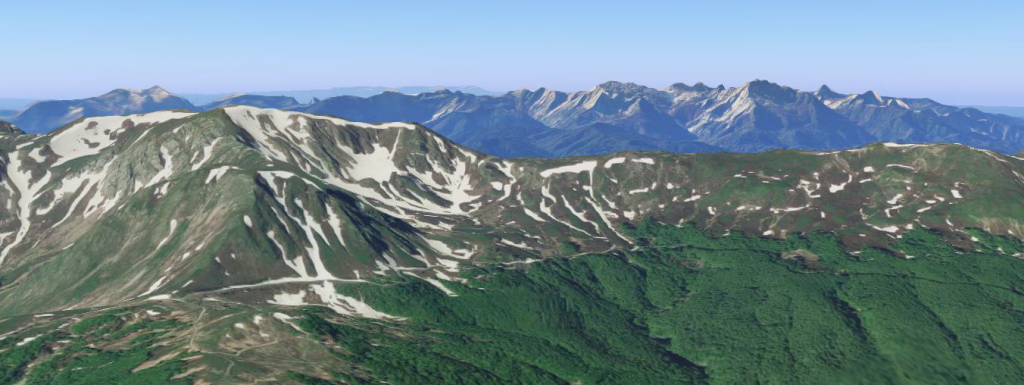
The sites where snow accumulates and melts later mostly occur on the gentler northern slopes of the chain. They usually correspond to the bottom of the glacial cirques and of the nivation hollows as well as to small depressions delimited by the protalus ramparts. Snow also lingers in the narrow hollows originated by rock slides along the summit ridges and subsequently modelled by cryogenic processes. Geomorphological conditions favourable to long lasting of snow occur only sporadically on the southern slopes corresponding to hollows formed at the foot of talus slopes and delimited by uphill-facing steps.
Vegetation in the areas above timberline (alpine life zone) is a patchy mosaic of dwarf shrub heathlands, intermixed with cryoxerophytic, acidophytic and mesophytic primary grasslands, snow-beds, small mires and secondary grasslands.
Vegetation above timberline
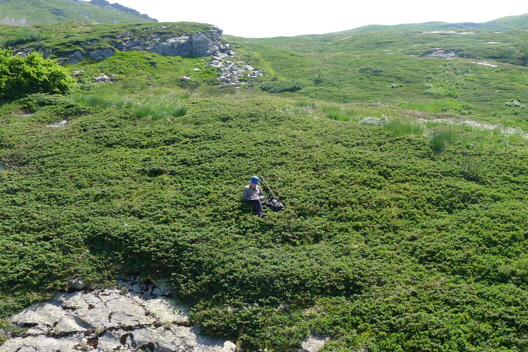
Ericaceous dwarf shrublands are settled above the timberline on a long stretch of the Tuscan-Emilian Apennines. They represent the most widespread vegetation type in the summit areas, where they are located mostly on the northern slopes.
Dwarf shrublands are dominated by Vaccinium species (Vaccinium myrtillus, V. uliginosum subsp. microphyllum (= V. gaultherioides) and V. vitis-idaea); other dwarf shrubs frequently occurring here are Empetrum hermaphroditum, Juniperus communis subsp. alpina and Rosa pendulina.
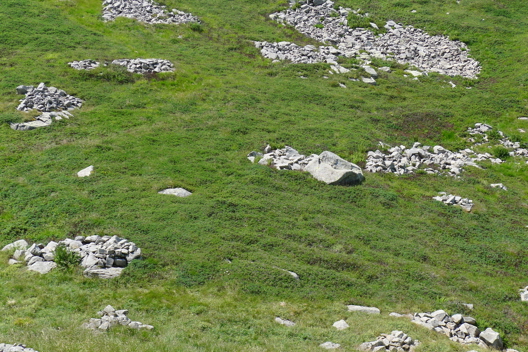
The following three main vegetation types were recognized: a) Empetro-Vaccinietum gaultherioidis, where Vaccinium uliginosum subsp. microphyllum prevails on V. myrtillus constantly accompanied by Empetrum hermaphroditum. The community is encountered at sites earlier free from snow snow with respect to the other shrublands; b) Rhododendretum ferruginei, a very rare and relic community where Rhododendron ferrugineum is the largely dominant dwarf shrub;
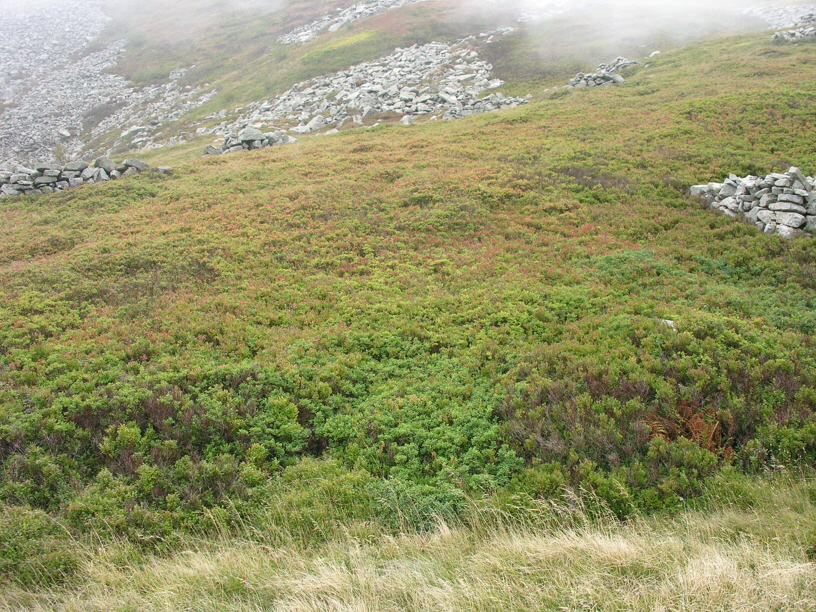
c) Hyperico richeri-Vaccinietum gaultherioidis; the community is characterized by the co-dominance of Vaccinium myrtillus and V. myrtillus. Hypericum richeri is the most frequent and abundant among the forbs.
This community is the most frequent and abundant among ericaceous dwarf shrublands throughout the Tuscan-Emilian Apennines. It occurs preferentially where snow cover lasts long enough.
Cryoxerophytic acidophytic primary grasslands occur along or close to the summit ridges and plateaus of the Tuscan-Emilian Apennines. They are characterized by a mixture of cushion forming chamaephytes (Silene acaulis subsp. bryoides), forbs (Alchemilla transiens and Trifolium alpinum) and graminoids (Festuca riccerii, Luzula spicata subsp. mutabilis, Oreojuncus trifidus), with scattered clumps of Vaccinium uliginosum subsp. microphyllum. The following two main vegetation types were recognized: a) Sileno bryoidis-Trifolietum alpini and b) Thymo polytrichi-Festucetum riccerii. In the first vegetation type Silene acaulis subsp. bryoides, Alchemilla transiens and Trifolium alpinum are constantly prominent. This community is restricted to the highest summits of the central part of the Tuscan-Emilian Apennines and confined to the plateaus from 1810 to 2110 m, where vegetation is exposed to strong winds and severe frosts and soils overlie a shallow deposit of colluvial detritus. In the Thymo polytrichi-Festucetum riccerii the endemic tussock grass Festuca riccerii is generally dominant or co-dominant and gives the community its distinctive physiognomy. Other constant species are Alchemilla transiens and Thymus praecox subsp. polytrichus. This community occurs within a relatively broad elevational range (between 1620 and 2060 m) along and close to the summit ridges of the Tuscan-Emilian Apennines. It is mostly characteristic of relatively sharp summits and of gently to moderately steep slopes facing to the southern quadrants.
Snow-beds occur only on the northern slopes of the highest summits of the Tuscan-Emilian Apennines at sites with maximum and longest lasting snow cover. The six snow-bed communities reported by recent studies, differing according to duration of snow cover, soil moisture and nutrient content, occur as small fragmentary stands with floristic composition very similar, though somewhat impoverished, to that of the acidophytic snowbed communities of the Alps.
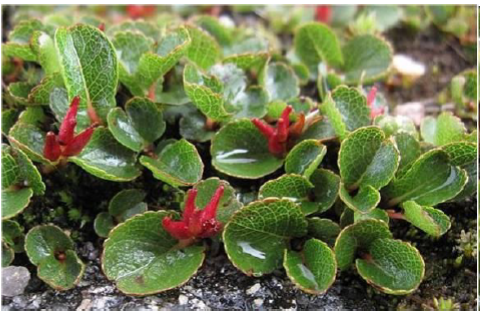
The Salicetum herbaceae consists of mats of prostrate shoots of Salix herbacea overhanging patchy and loose crusts of bryophytes. Among other vascular plants, Poa alpina, Agrostis rupestris and Sedum alpestre occur most frequently.
The Salicetum herbaceae occurs at only two sites (Mt. Prado and Mt. Cimone). At Mt. Prado it is restricted to sheltered positions on the summit plateau where it occurs on well-drained gravelly soils with some solifluction.
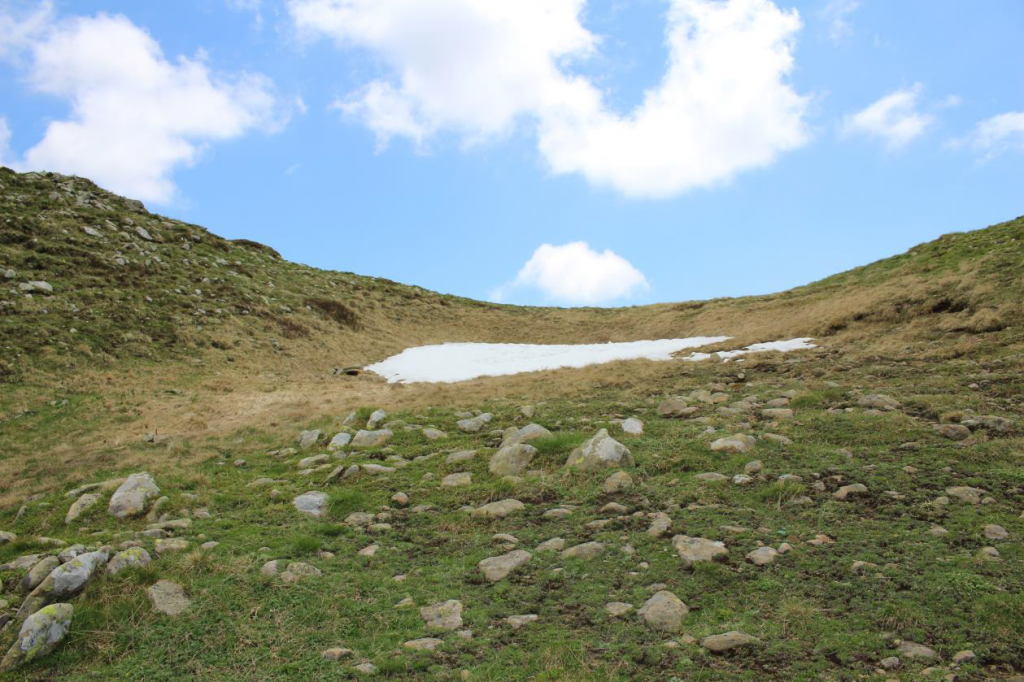
The Oligotricho hercynici-Gnaphalietum supini includes very low and from open to close turfs in which mat-forming rosette herbs, tussocky grasses and moss carpets provide the most distinctive elements. Physiognomy and floristic composition of stands can be fairly different. Gnaphalium supinum is usually the most abundant vascular plant. Other constant vascular species are Agrostis rupestris and Plantago alpina. The most common bryophytes are Kiaeria starkei and Marsupella brevissima. The Oligotricho hercynici-Gnaphalietum supini is the most frequent snowbed association in the area. It is, usually, encountered in small stands, over gentle to steep north-facing slopes, not far from the summit ridges, at elevation ranging from 1750 to 2020 m. The stands are generally free from snow earlier than those of the Salicetum herbaceae, but downwash of melt-waters along the slope keeps here the soil moist during a large part of the vegetative season. Bryophytes, being the plants most obviously able to benefit from this particular microenvironmental condition, are, therefore, particularly abundant and rich in number.
The Luzuletum spadiceae is characterized by the overwhelming dominance of Luzula alpino-pilosa, whose compact tussocks make up an uniform canopy overtopping a very sparse ground cover of smaller grasses, herbaceous dicotyledons and ferns. Bryophytes occur only at few stands, because their growth is usually hindered by the thick layer of dead leaves of the dominant species. The majority of stands is localized within narrow and steep N- facing gullies at sheltered sites which retain snow cover long and where snow melt is a major source of the irrigating waters.
The Polytrichetum sexangularis is a bryophyte-dominated snowbed plant community. The most outstanding species in the moss carpet are Polytrichastrum sexangulare and Marsupella brevissima, together with Kiaeria starkei and Pohlia drummondii. Vascular plants are typically sparse, with a global cover not exceeding 10%. The community occurs at only one site, corresponding to a late snowbed occurring at a particularly sheltered site within a fossil rock glacier in the western glacial cirque of M. Giovo.
The Poo-Cerastietum cerastoidis includes stands with a varying cover of the herbaceous layer, where Cerastium cerastoides is constant and subdominant among vascular species. Among bryophytes, Polytrichastrum sexangulare, Ceratodon purpureus and Polytrichum juniperinum are constant. In the Tuscan-Emilian Apennines the Poo-Cerastietum cerastoidis is restricted to the northern slopes of Mt. Cusna and Mt. La Piella, where it colonizes the flat bottoms of sheltered ill-drained hollows.
The Caricetum foetidae is a community dominated by the sedge Carex foetida, whose tufted shoots form usually a dense cover. The most frequent vascular plants are the grasses Nardus stricta and Deschampsia caespitosa. Under the closed and dense canopy bryophytes occur only occasionally. The association is restricted to the highest summits of the central part of the Tuscan-Emilian Apennines, where it colonizes sheltered flattened sites lying at the bottom of small glacial cirques, at nivation hollows and at small hollows delimited by protalus ramparts.
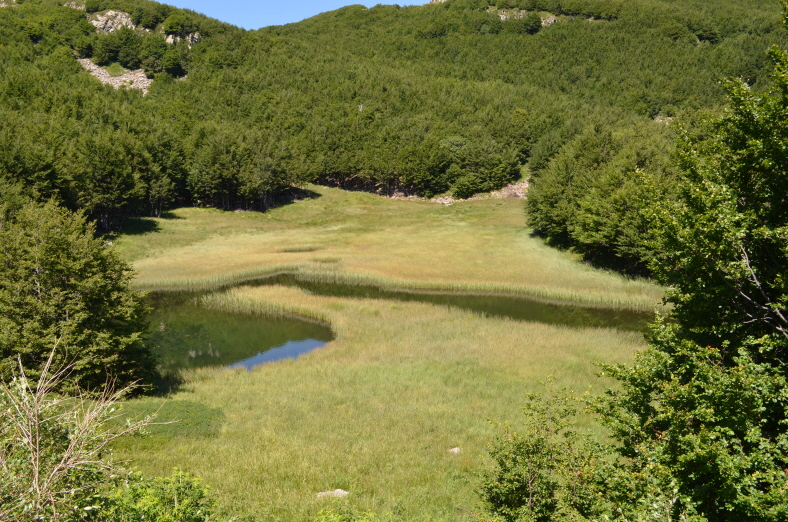
Wetlands. Small acidophytic mires belonging to the community Caricetum fuscae occur sporadically at the bottom of small hollows lying above timberline. Their vascular layer is characterized by the dominance of the sedge Carex nigra (= C. fusca).
Among bryophytes, the most frequent and abundant species are Sphagnum subsecundum and Warnstorfia exannulata. The latter bryophyte frequently forms also a dense carpet on the bottom of small ponds drying during the summer. The vascular species dominant in these temporary ponds is the rush Juncus filiformis.
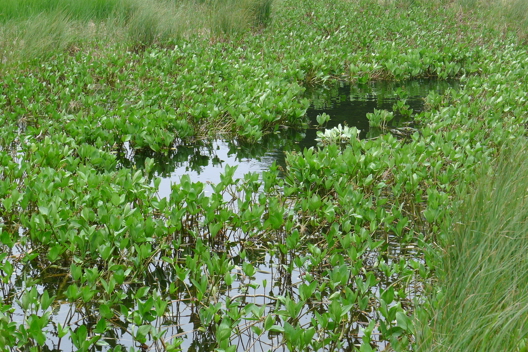
The springs and streamlets occurring here and there are colonized by Caltha palustris, Cardamine asarifolia and Carex frigida and by the bryophytes Brachythecium rivulare, Philonotis seriata and Palustriella commutata.
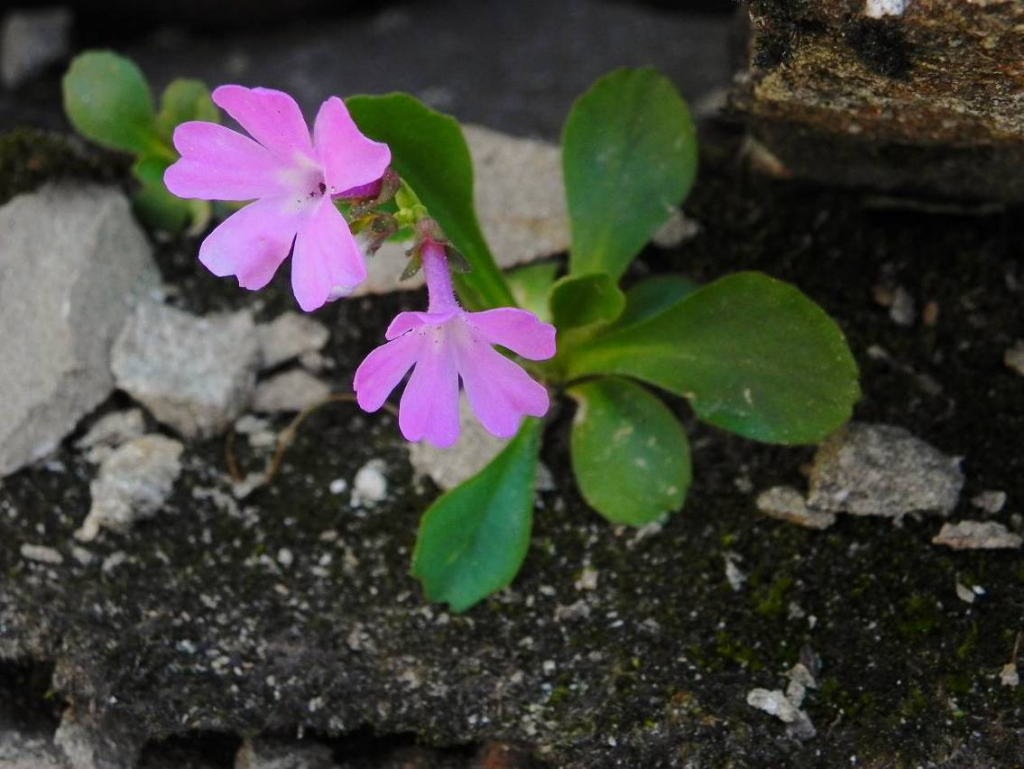
Rock faces. The sandstone rock faces are colonized by the community Drabo aizoidis-Primuletum apenninae. The constant species in this community are Primula apennina, a strictly endemic species that is prominent in most stands, Arenaria bertolonii, Alchemilla alpina and Saxifraga paniculata.
The association is mostly restricted to sandstone rocky outcrops above timberline, between about 1550 and 1950 m. At shaded northfacing rock crevices with a cool and humid microclimate the Drabo aizoidis-Primuletum apenninae is replaced by the Cystopteridetum fragilis a community rich in ferns and dominated by Cystopteris fragilis frequently accompanied by Asplenium viride.
Scree slopes. The stabilized sandstone scree slopes occurring along the summit areas in the Tuscan-Emilian Apennines are colonised by a boulder fern-rich community dominated by Cryptogramma crispa. The fern is settled at the shaded bottom of the interstices among boulders, where microclimate is relatively moist.
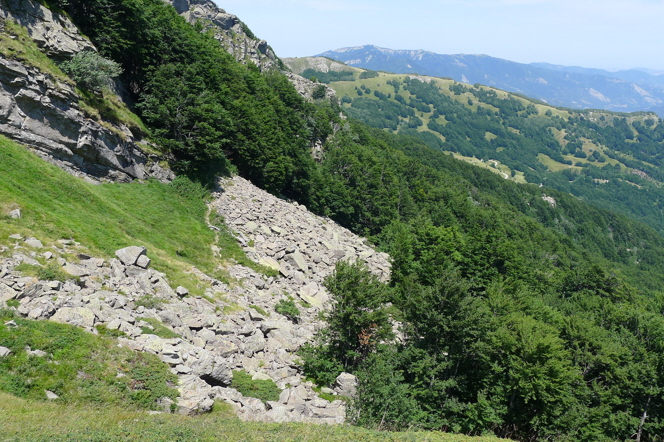
The scree slopes derived from the degradation of marly outcrops are formed by gravels and pebbles. They are colonized by a community where Arenaria bertolonii and Robertia taraxacoides are the most prominent species.
Mesophytic grasslands are dominated by Festuca violacea subsp. puccinellii and Poa alpina (among graminoids) and by small herbaceous dicotyledons (Trifolium thalii and Crepis aurea subsp. glabrescens). These grasslands were in the past subject to only moderate grazing and can, therefore, regarded as near-natural grasslands. The Violet Fescue grasslands are species-rich and varied with a dense growth of grasses and herbaceous dicotyledons. The herbage is relatively high, usually up to 30 cm, and the cover is generally closed or almost so. This plant community is confined to slopes having a general northern aspect, from west-north-west through to north-east, where the snow melts slowly, providing a good water supply. Another type of mesophytic grasslands is represented by a community where Anemonastrum narcissiflorum is the dominant and constant species. Other constant species are the endemic Aquilegia lucensis, Pulsatilla alpina subsp. millefoliata and Scabiosa lucida (Aquilegio lucensis–Anemonastretum narcissiflorae). The community occurs at scarcely accessible marly ledges where substrate was lime-rich differently from the overhanging sandstone cliffs.
Secondary acidophytic grasslands mostly consist of relatively species-poor acidophytic pastures with predominance of Nardus stricta, preferentially located on the gentler ground and of species rich acidophytic pastures dominated by the Apennine endemic Brachypodium genuense or by Festuca paniculata mostly occurring on the steeper southern slopes of the chain.
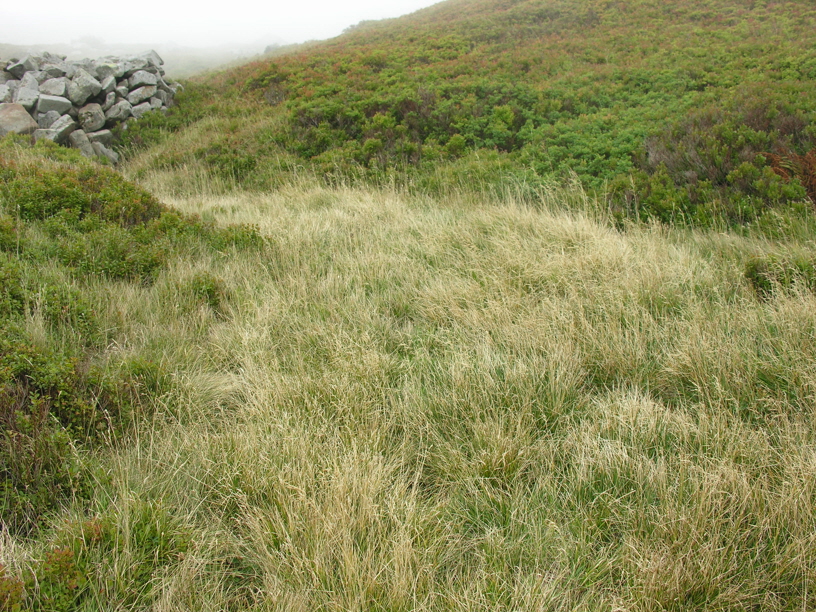
The pastures dominated by Nardus stricta were assigned to the community Violo ferrarinii-Nardetum strictae. Festuca rubra subsp. commutata among the grasses, the herbaceous dicotyledon Geum montanum and the dwarf shrub Vaccinium myrtillus are the only other constant species in this community. Nardus stricta is generally dominant in all stands, with Festuca rubra subsp. commutata being often subdominant and Carex sempervirens, Geum montanum and Vaccinium uliginosum subsp. microphyllum achieving local prominence. The pastures dominated by Brachypodium genuense or by Festuca paniculata are scarcely represented on the Emilian slope of the Tuscan-Emilian Apennines.

